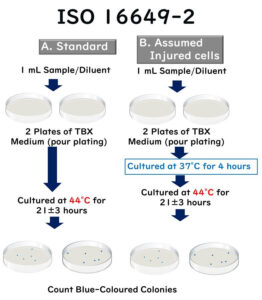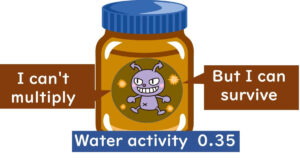Unveil the magic of genetic testing in microbiology—a swift and precise upgrade from the traditional, slower culturing methods. Imagine genetic testing, especially PCR, as a high-speed copier that zaps genes into numerous copies in no time, while traditional culturing is more like assembling a house brick by painstaking brick. This article draws vibrant analogies to show how DNA’s rock-solid consistency and the universal language of its data propel genetic testing to the forefront of reliable identification. It’s a game-changer in tracking contamination, particularly in the food industry, revolutionizing safety standards across labs and conditions. Dive into this comparative exploration that not only demystifies cutting-edge technology but also illustrates its seamless integration with traditional methods, boosting both their prowess and precision.
The speed of testing
Culturing Is Like Building a House, Genetic Testing Is Like Using a Copier
The advantage of genetic testing over culturing lies in its speed. Culturing relies on cell division. In contrast, genetic testing only assumes the amplification of genes. To illustrate, think of cell division in culturing as building a house from scratch. Meanwhile, gene amplification in genetic testing is akin to making copies on a copier.
Building a house involves laying foundations, erecting frameworks, and constructing until the house is complete—this process might take about three months, analogous to the time it takes for one microbial cell division in culturing. On the other hand, DNA methods involve just copying a part of DNA, much like how a copier works. A copier can produce multiple copies in a matter of seconds, whereas building a house takes months.
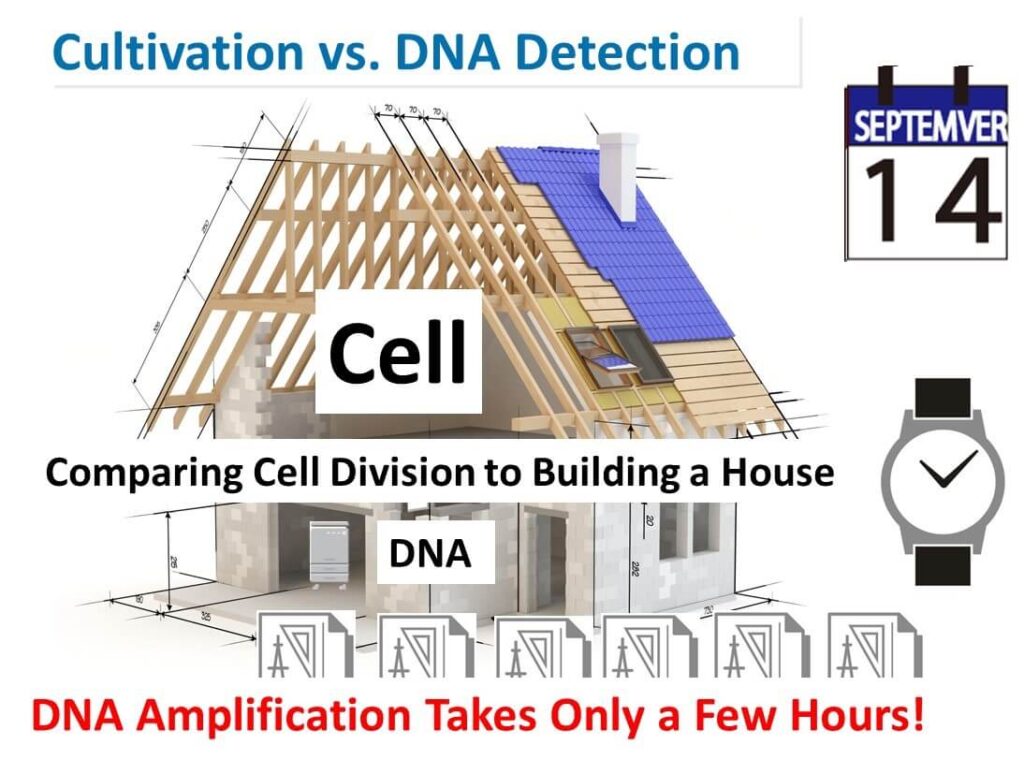
This comparison helps clarify the differences between culturing methods and DNA methods, likening them to house-building and using a copier, respectively.
Explaining Contamination Source Tracking in Food Factories with a Clear Example
Let’s clarify the speed of genetic testing methods with an example from a food factory. Imagine a company discovers Listeria in its cheese products. President Suzuki is shocked.
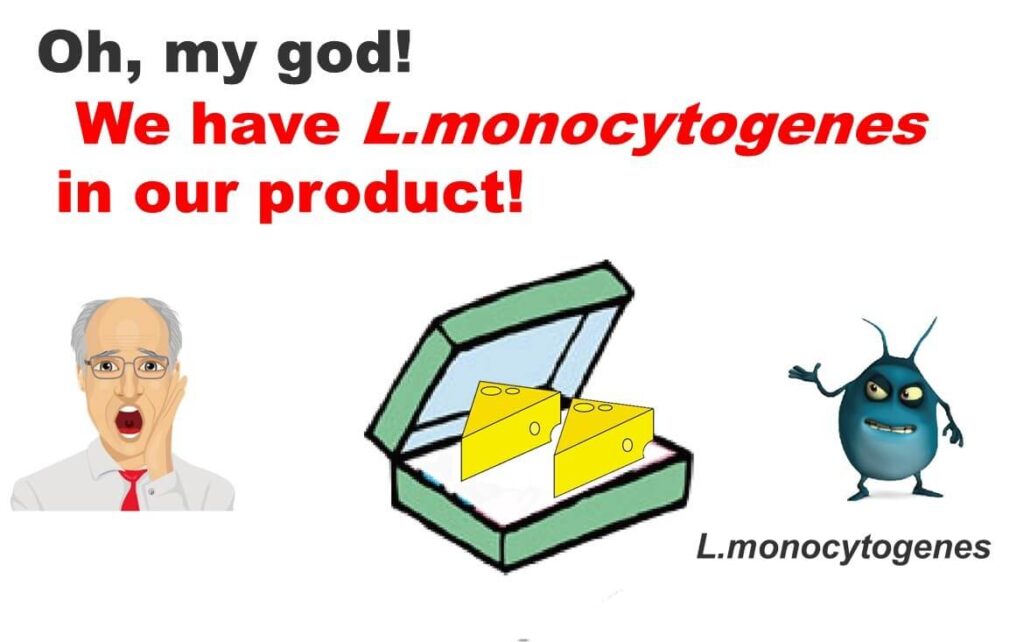
He instructs the plant's microbial manager, Mr. Yamada, to resolve this issue.
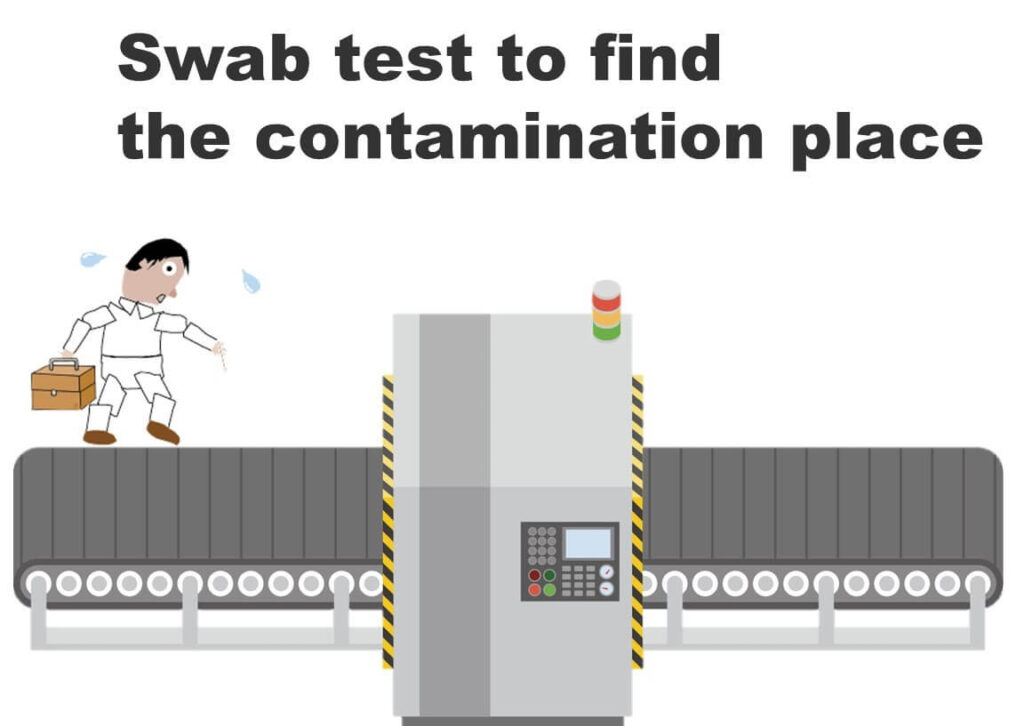
Not knowing where in the plant the Listeria contamination occurred, Mr. Yamada first considers disassembling the entire production line and cleaning each part, a process that could take about a week. President Suzuki is furious, exclaiming that halting the factory for seven days is unthinkable, calling it foolish.

In desperation, Mr. Yamada conducts swab tests to pinpoint the contamination.
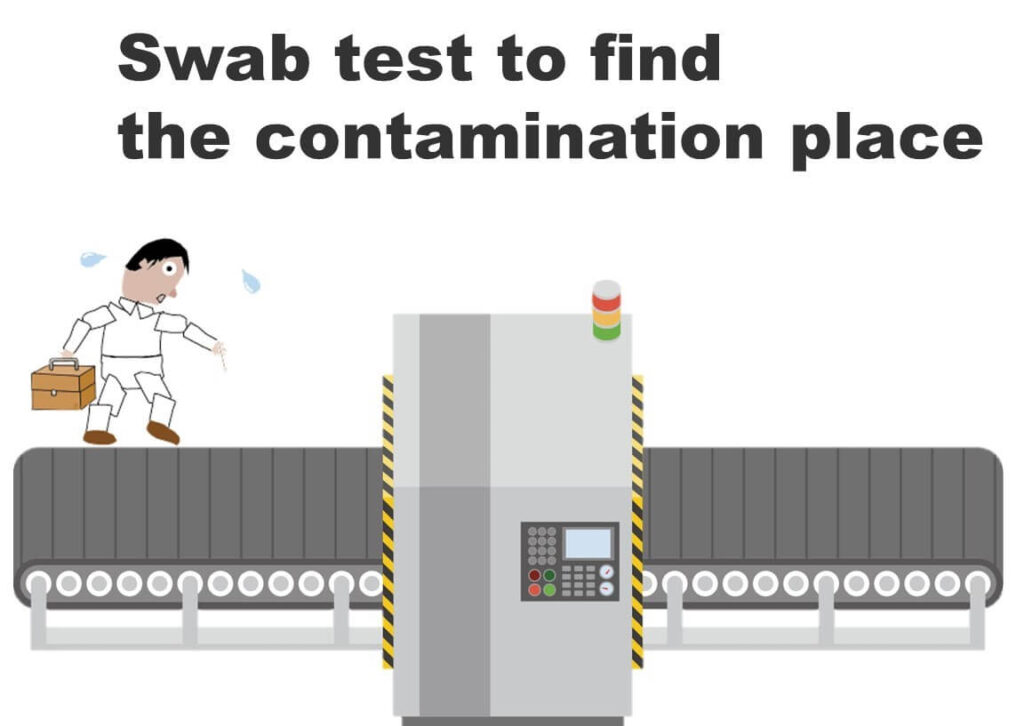
However, using culturing methods to test the swab samples would take about seven days to yield results.
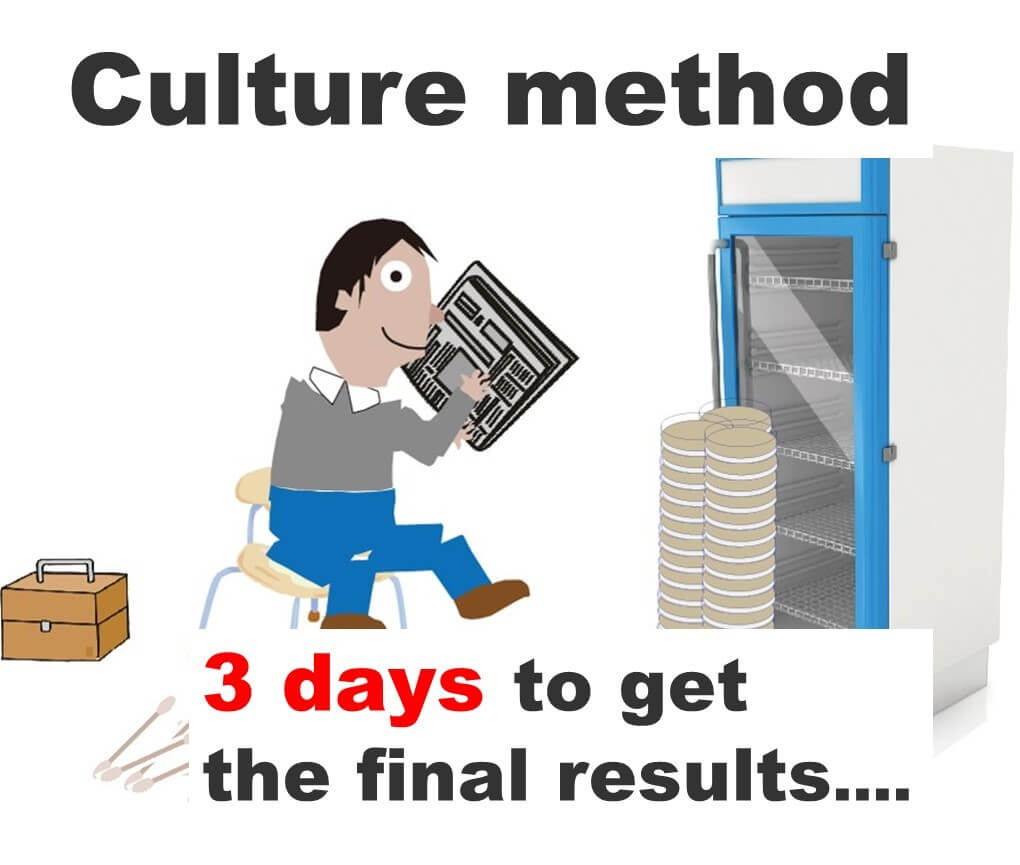
This leads to further frustration from President Suzuki, who demands the contamination results within hours.

This is where genetic testing methods, such as PCR, come into play. PCR allows for rapid analysis of swab samples, quickly identifying which areas are contaminated.
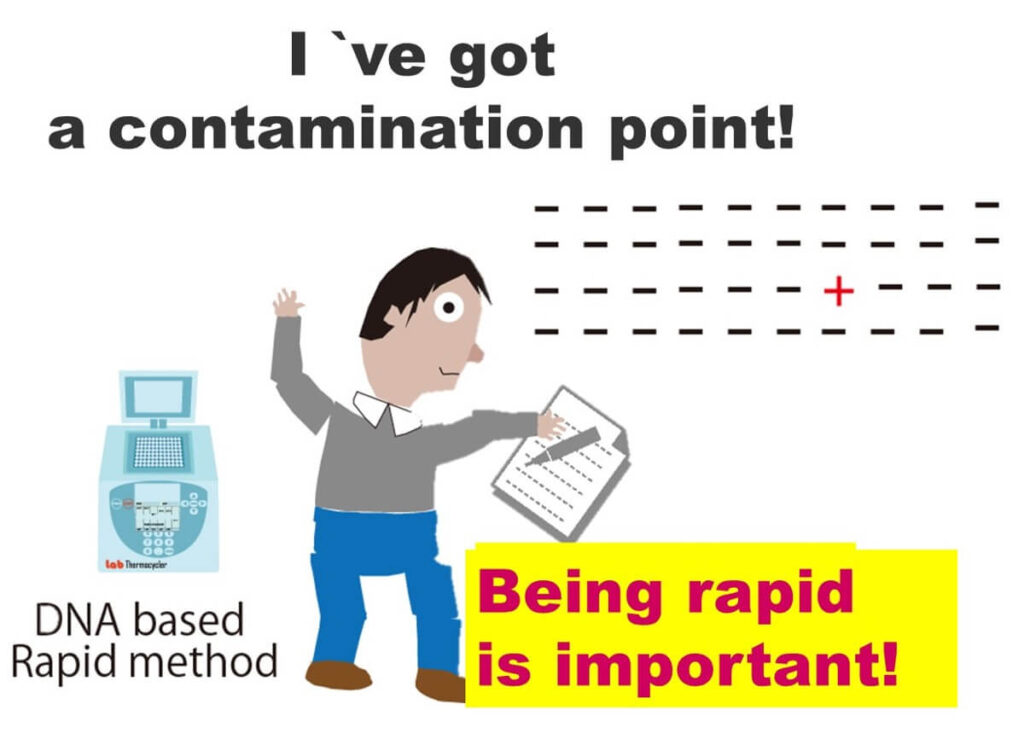
By cleaning these areas, the immediate problem is resolved. This highlights the superior advantage of genetic testing methods (PCR) in identifying contamination sources quickly.

Accuracy, data compatibility.
DNA Sequences Remain Consistent Across Different Locations and Conditions
Another point where genetic testing methods excel over culturing is in their accuracy and consistency of results.
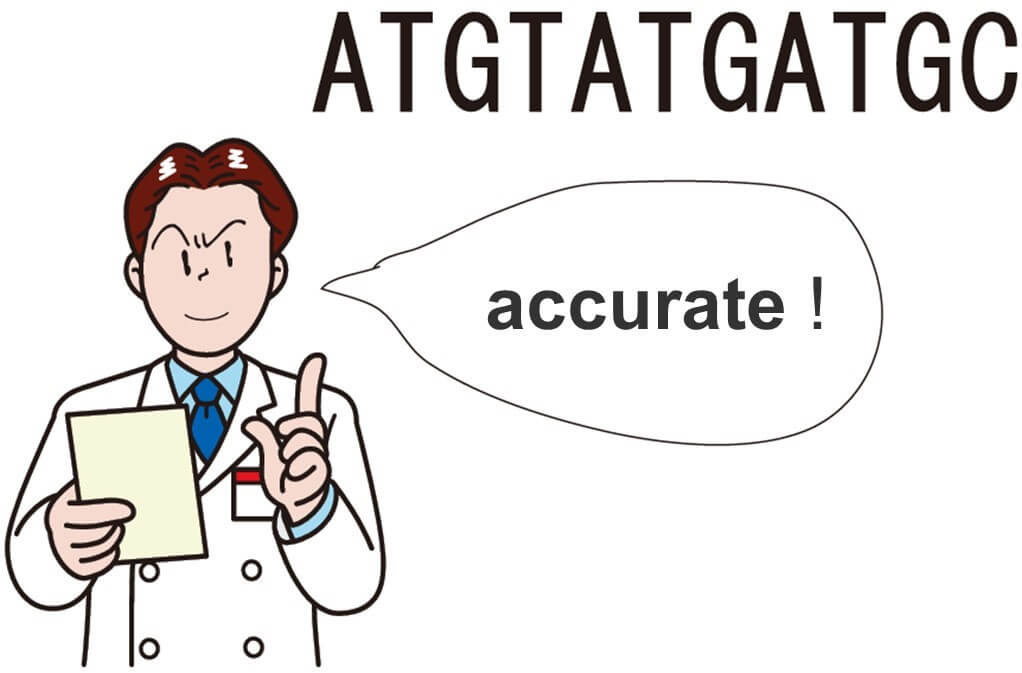
Let's use an analogy to explain this concept. Imagine your colleague Bob thinks your company's President, Mr. Yamada, has a very calm personality. However, you feel that President Yamada is quite irritable. The evaluations from Bob and you paint entirely different pictures of Mr. Yamada's personality.
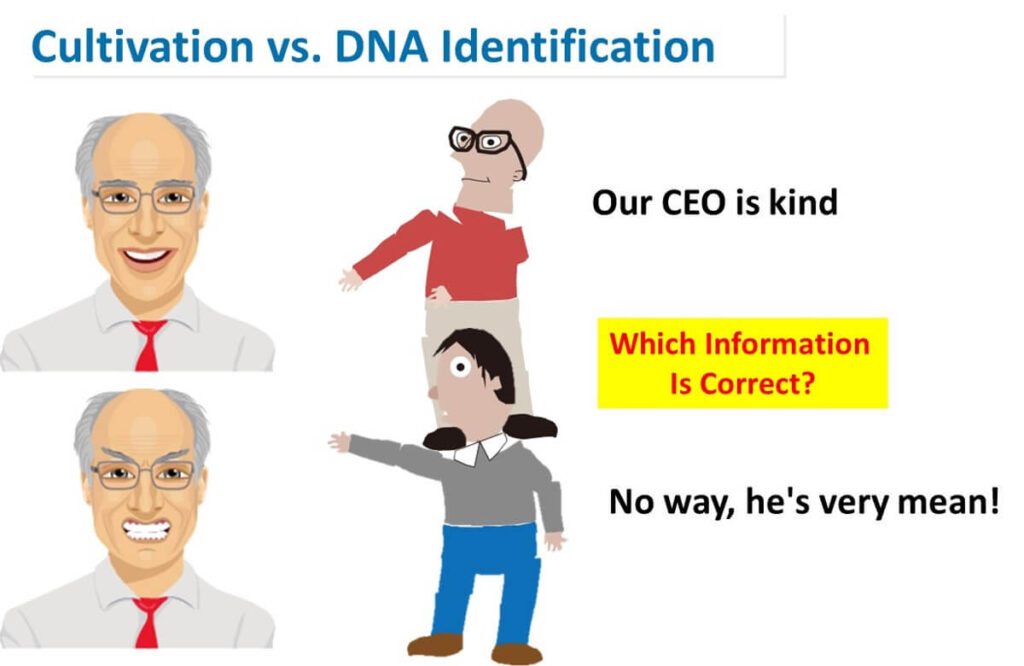
Why this discrepancy? Well, Bob always brings ice cream when he visits Mr. Yamada's office. Mr. Yamada loves ice cream, so he always appears cheerful and kind during their conversations. On the other hand, you never bring ice cream, and without his favorite treat, Mr. Yamada tends to get irritable, making him seem very grumpy to you.

This story illustrates how humans can show different personalities depending on the environment they are in. Similarly, microorganisms can exhibit different characteristics depending on the culture medium and environmental conditions.
In an experience from my lab, we collaborated with another research lab and decided to use the same bacterial strain. However, the identification results differed between our lab and theirs. Upon investigation, it was discovered that the types of culture media and conditions used for microbial identification slightly differed between the two labs.
This shows that even minor methodological differences can lead to variations in microbial identification results. Differences in the skill levels of experimenters can also lead to varied outcomes. However, when identification is based on DNA sequencing, such variability does not occur, ensuring consistency and reliability in results across different settings.
Compatibility with Global and Historical Data
Genetic testing for microbial identification not only ensures accuracy but also excels in data compatibility. The DNA sequence, being a simple code of four nucleotide bases, remains consistent no matter who or where in the world it is analyzed. This universal compatibility is a significant advantage of genetic testing.
Consider a scenario in the same research lab where, ten years ago, researchers isolated a bacterium. Those researchers have since retired. A decade later, a new junior employee isolates bacteria from the same factory and sequences the DNA. Upon comparing this sequence with the database stored on the company's computer, it matches exactly with the microorganism isolated from the same factory ten years earlier.
Thus, DNA sequences have the unique advantage of allowing communication across time and space, maintaining continuity and consistency in microbial identification over years and across global boundaries.
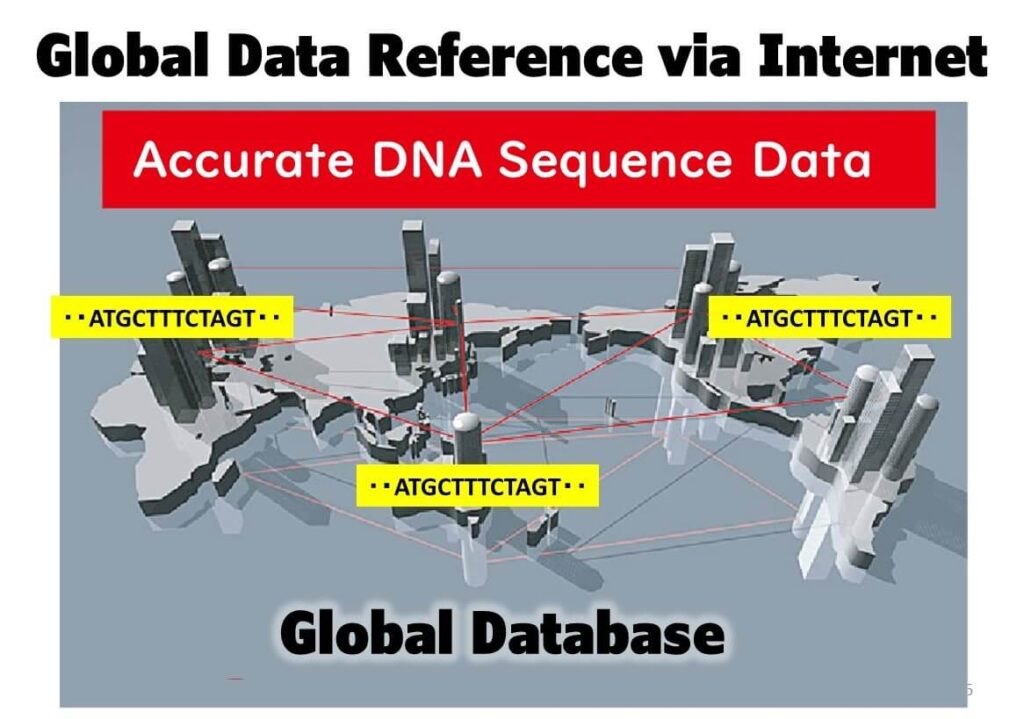
Limitations of Genetic Testing—The Need for Pure Colony Isolation
Of course, the fundamental premise of microbial testing in food is the isolation of colonies. Without isolating colonies, the characteristics of the bacteria remain unknown and the information gathered is incomplete.
As mentioned earlier, genetic testing methods such as PCR significantly enhance the speed of identifying whether bacteria are present in a particular location in a food factory. However, it is crucial to remember that in microbiology, isolating and culturing microorganisms is necessary to obtain sufficient information. Genetic testing methods can detect the presence or absence of bacteria as a signal, which might be sufficient for practical purposes. However, to thoroughly understand the types and characteristics of the bacteria present, culturing is essential. While genetic testing offers convenience, this limitation must be acknowledged.

Using Genetic Testing as a Compass for Culturing Methods
It's impractical to rely solely on culturing methods without knowing where the target bacteria are located. Starting with culturing methods in a factory or on food without prior genetic testing would waste vast amounts of time and energy. Consider the factory example discussed earlier: if every swab from every part of the factory were to be cultured, it would be a tremendous effort and not practical.
Imagine a child going to the mountains to collect insects. In the illustration below, the act of catching insects with a net represents the culturing method. However, if the child heads out without knowing where the insects are, the day could end in vain. It’s essential to know which mountain the insects are on beforehand. This necessary guidance can be seen as a compass, similar to how we can view genetic testing methods like PCR.
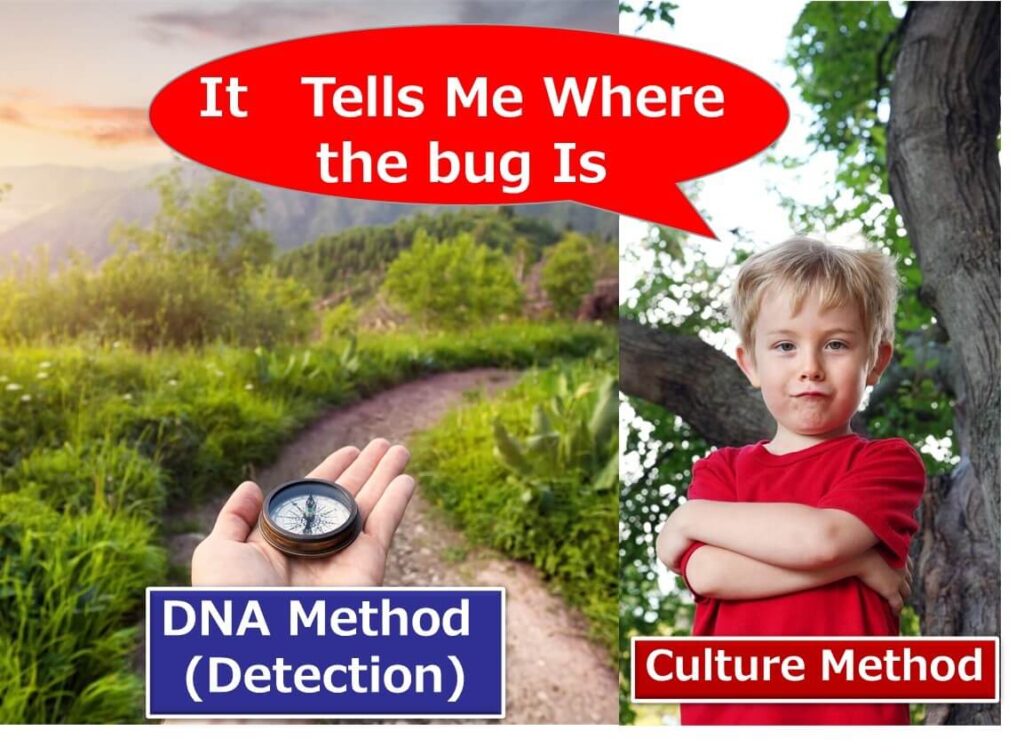
The speed of genetic testing makes it an effective guide to navigate through a large number of samples, identifying whether the target bacteria are present. As demonstrated, the practical approach would be to rapidly test a large volume of samples using genetic testing like PCR, and then focus on culturing only the positive samples for further classification.
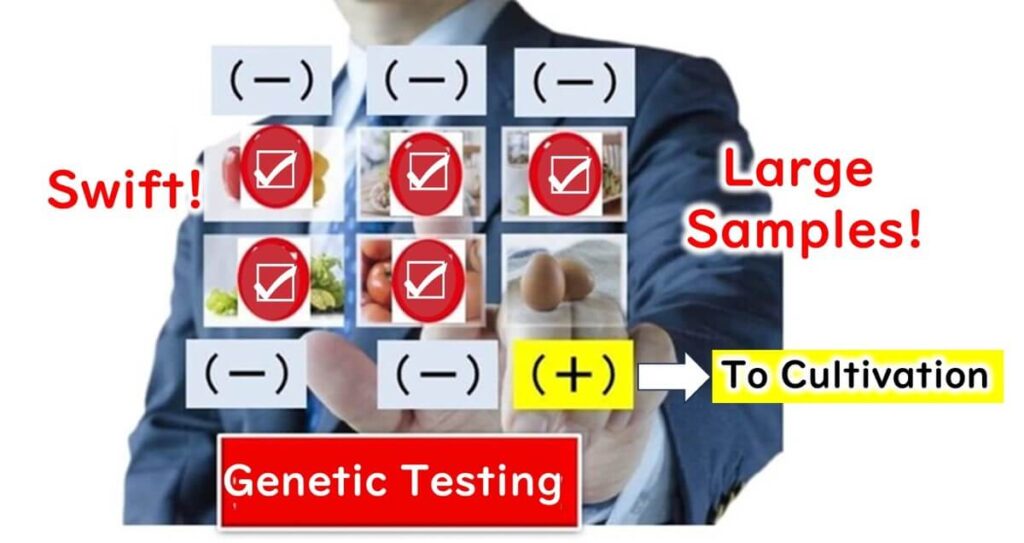
Integrating Genetic Testing into Culturing Steps
Genetic testing can also be positioned as an auxiliary method that streamlines steps when isolating cultures. For instance, instead of conducting all steps via culturing methods when identifying foodborne pathogens—such as from enrichment culturing to selective culturing and differentiating on diagnostic media—using genetic testing can hasten isolation and identification. To use the insect collecting analogy, genetic testing not only serves as a compass that directs to where the insects are but also assists in the actual capture of insects on a tree, helping the child effectively.
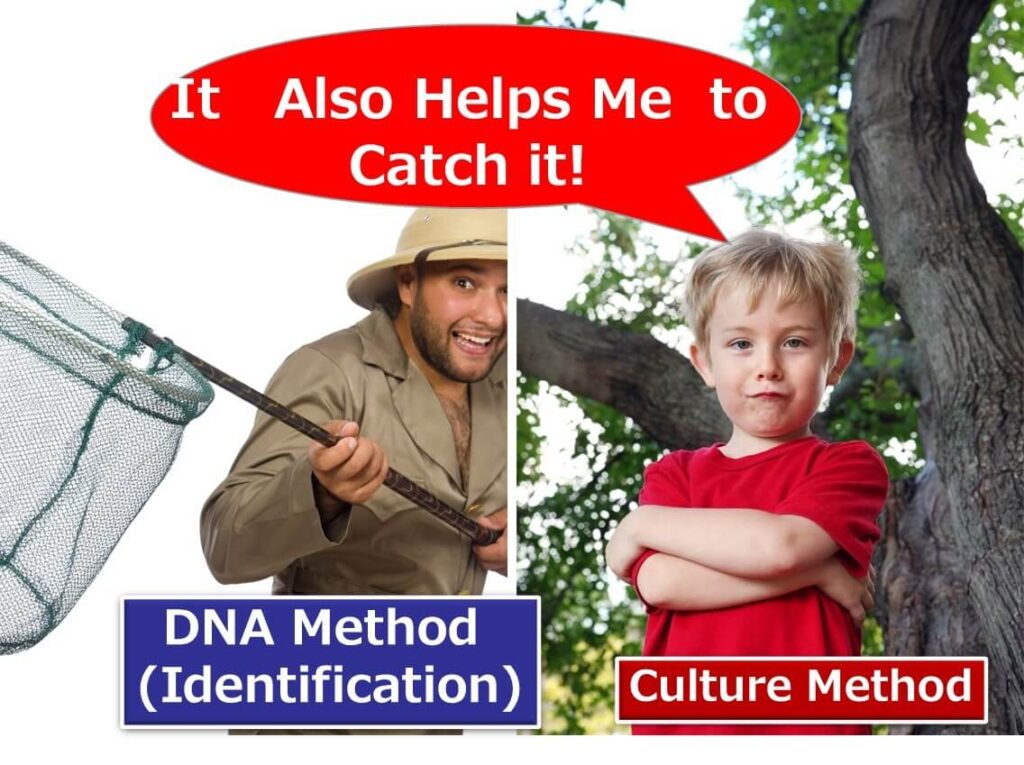
Thus, it's beneficial to view genetic testing and culturing methods not as opposing techniques but as complementary. Genetic testing can be organized as a method that facilitates the isolation of bacteria through culturing, aiding the overall process efficiently.
